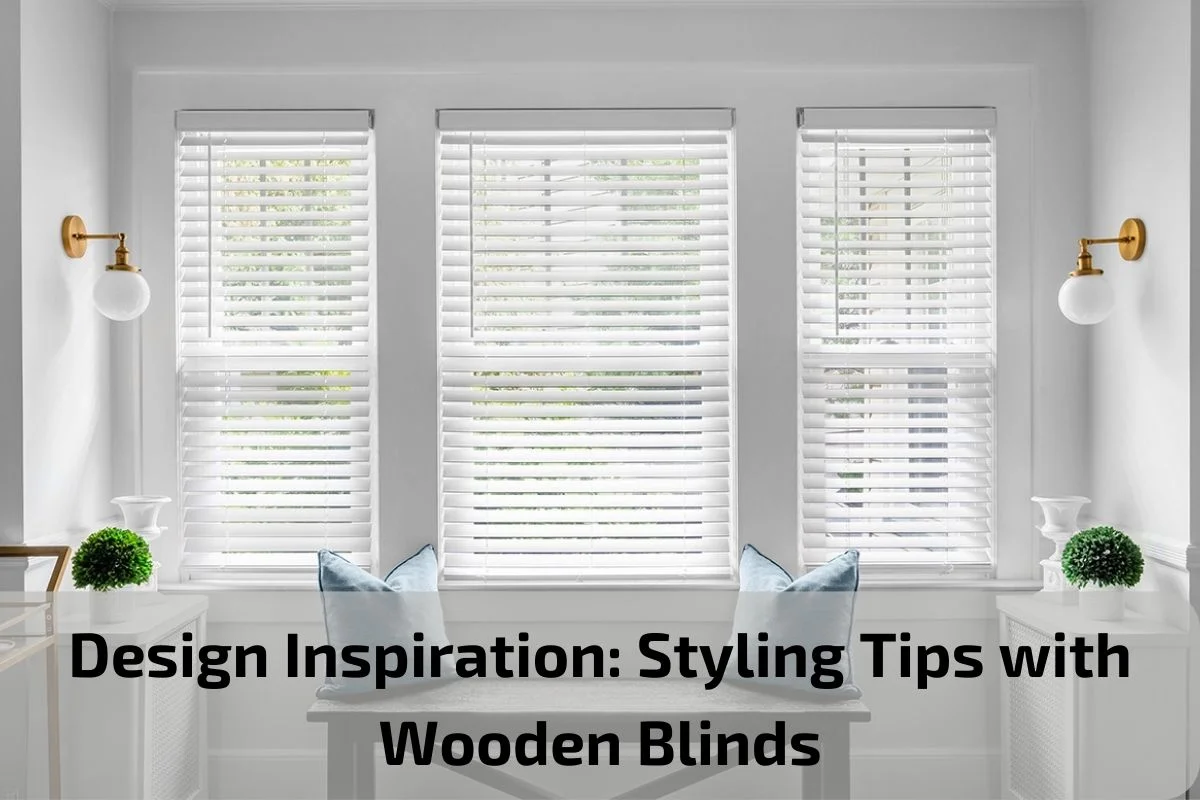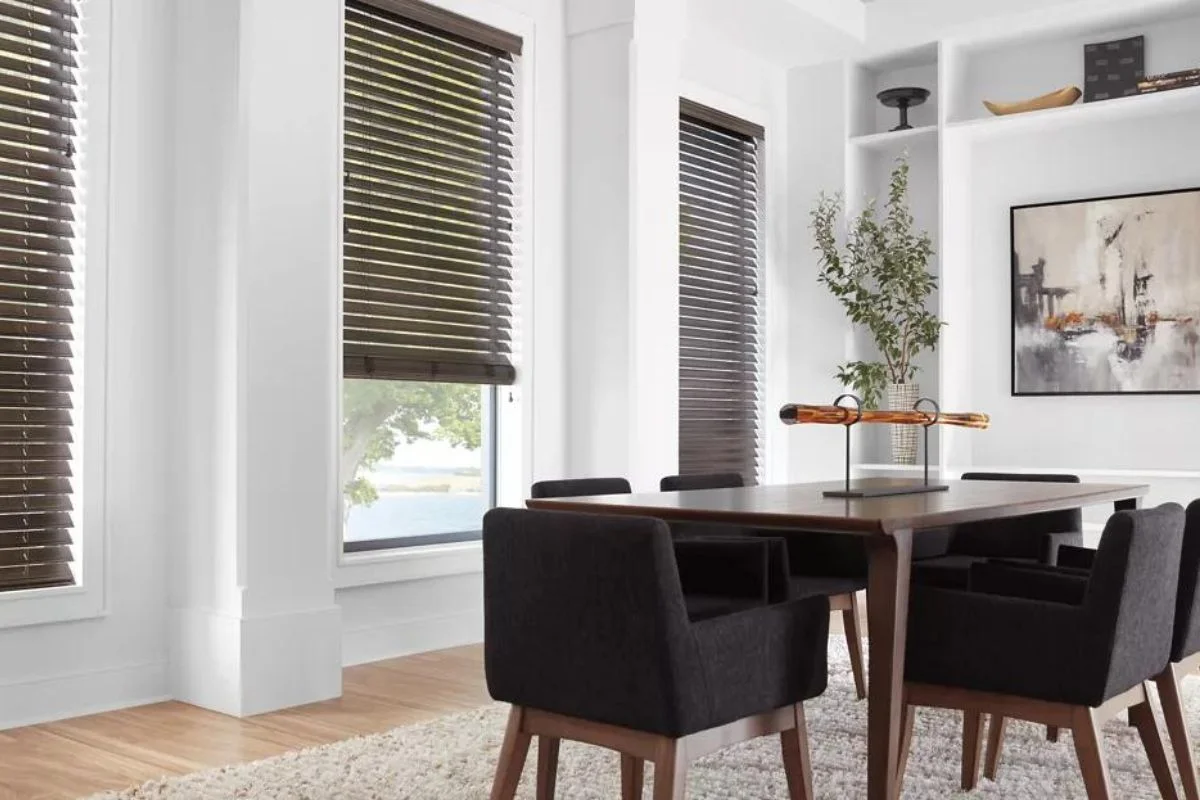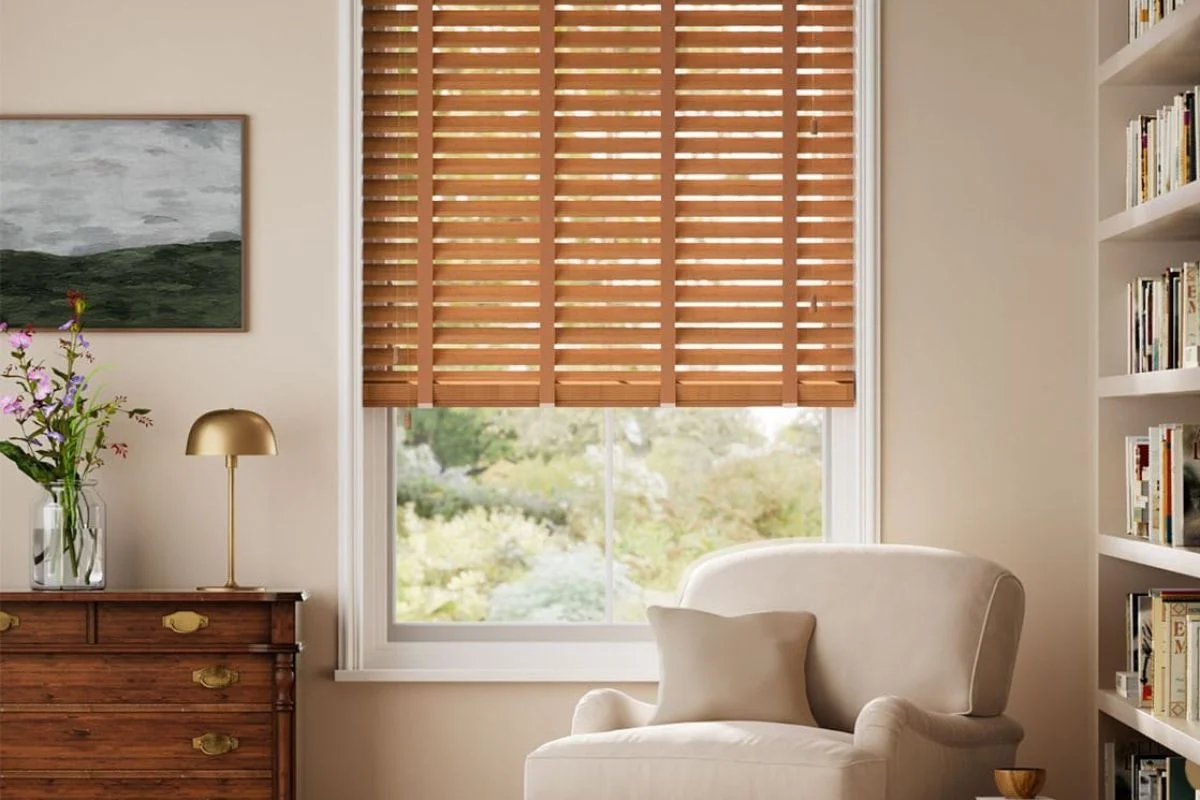Wooden blinds are not just functional window treatments; they are also elegant design elements that can transform the ambiance of any room. With their natural beauty, versatility, and timeless appeal, wooden blinds have become a popular choice for homeowners and interior designers alike. Whether you’re aiming for a rustic, traditional, or contemporary look, wooden blinds offer endless possibilities for styling and enhancing your space.
In this article, we’ll explore design inspiration and styling tips with wooden blinds. From choosing the right color and finish to incorporating them into various design themes, we’ll uncover creative ways to make wooden blinds the focal point of your room while complementing your overall décor scheme. Let’s delve into the world of wooden blinds and discover how they can elevate the aesthetics of your home or office.
Brief Overview of Wooden Blinds as Popular Window Treatments
Wooden blinds stand as timeless and versatile window treatments that have remained a staple in interior design for years. Crafted from natural wood materials such as basswood, bamboo, or faux wood, these blinds offer more than just functional light control—they bring warmth, elegance, and a touch of nature into any space. With their classic appeal and customizable features, wooden blinds have become a favored choice for homeowners and designers seeking to enhance the aesthetics and ambiance of their rooms.
Importance of Wooden Blinds in Interior Design and Home Décor
Wooden blinds play a crucial role in interior design and home décor by adding texture, warmth, and sophistication to living spaces. Here’s why they are highly regarded:
Natural Aesthetics: Wooden blinds bring the beauty of nature indoors, creating a sense of warmth and tranquility. Their organic textures and earthy tones effortlessly complement a wide range of design styles, from rustic and traditional to modern and contemporary.
Versatile Design Element: Wooden blinds offer versatile design options, allowing homeowners to customize the look and feel of their windows. With various wood types, finishes, and slat sizes available, wooden blinds can be tailored to match any interior aesthetic or color scheme.
Light Control and Privacy: One of the key functions of wooden blinds is their ability to regulate natural light and provide privacy. By adjusting the slats, homeowners can easily control the amount of light entering a room while maintaining their privacy from outside views.
Durability and Longevity: Wooden blinds are known for their durability and longevity, making them a practical investment for homeowners. When properly cared for, wooden blinds can withstand the test of time and continue to enhance the beauty of a home for years to come.
Energy Efficiency: Wooden blinds also offer energy-saving benefits by providing insulation against heat and cold. During hot summer months, they can help block out excess sunlight, reducing the need for air conditioning. In colder seasons, they can act as a barrier against chilly drafts, helping to maintain indoor warmth.
Timeless Appeal: Unlike trendy window treatments that may go out of style, wooden blinds have a timeless appeal that transcends passing fads. Their classic elegance ensures that they remain a timeless addition to any home décor, adding value and aesthetic charm to the property.
Advantages and Disadvantage of Wooden Blinds
Wooden blinds offer several advantages that contribute to their popularity in home décor, but they also come with certain disadvantages that should be considered. Here’s a look at both sides:
Advantages:
Natural Aesthetics: Wooden blinds add warmth, texture, and a touch of nature to any room, enhancing its overall aesthetics and ambiance.
Versatility: With various wood types, finishes, and slat sizes available, wooden blinds offer versatile design options that can complement a wide range of interior styles and color schemes.
Light Control: Wooden blinds provide excellent light control, allowing homeowners to adjust the slats to regulate the amount of natural light entering a room while maintaining privacy.
Durability: Wooden blinds are known for their durability and longevity when properly cared for, making them a worthwhile investment for homeowners.
Insulation: Wooden blinds offer insulation against heat and cold, helping to improve energy efficiency by reducing heat transfer through windows.
Disadvantages:
Cost: Wooden blinds tend to be more expensive than alternative window treatments such as vinyl or aluminum blinds, which may not be suitable for homeowners on a tight budget.
Susceptibility to Moisture: Wooden blinds are susceptible to warping, cracking, and mold growth when exposed to moisture, making them less ideal for humid environments such as bathrooms or kitchens.
Maintenance: Wooden blinds require regular maintenance to keep them clean and free from dust and debris. Additionally, special care should be taken to avoid scratching or damaging the wood surface.
Limited Light Blocking: While wooden blinds offer excellent light control, they may not provide complete blackout capabilities, which could be a drawback for those seeking total darkness in bedrooms or media rooms.
Environmental Impact: The production of wooden blinds may have environmental implications depending on the sourcing of the wood materials and manufacturing processes involved.
Choosing the Right Wooden Blinds
Selecting the perfect wooden blinds for your space involves considering various factors to ensure they complement your décor and meet your practical needs. Here are some key considerations to keep in mind:
Wood Type: Choose a wood type that aligns with your aesthetic preferences and budget. Common options include basswood, bamboo, oak, and maple, each offering unique grain patterns and colors.
Slat Size: Consider the slat size of the blinds in relation to the size of your windows and the overall scale of the room. Larger slats can create a more contemporary look, while smaller slats may suit traditional or smaller spaces.
Finish and Color: Select a finish and color that harmonizes with your existing décor and furnishings. Opt for stains or paints that enhance the natural beauty of the wood while complementing the color palette of the room.
Mounting Options: Decide whether you prefer inside or outside mount blinds. Inside mount blinds fit within the window frame, providing a clean and streamlined look, while outside mount blinds extend beyond the frame, offering maximum light blockage and coverage.
Operating Mechanism: Consider the operating mechanism that best suits your preferences and lifestyle. Options include standard corded blinds, cordless blinds for child safety, and motorized blinds for convenient remote control operation.
Light Control and Privacy: Assess your light control and privacy needs when selecting the slat orientation and tilt mechanism of the blinds. Horizontal slats offer adjustable light control and privacy, while vertical slats are ideal for sliding glass doors and large windows.
Budget: Determine your budget for wooden blinds and explore options that offer the best value for your investment. Consider factors such as quality, durability, and warranty coverage when comparing prices.
Samples and Swatches: Request samples or swatches of different wood types, finishes, and colors to visualize how the blinds will look in your space. This allows you to compare textures and colors under different lighting conditions before making a final decision.
Professional Measurement and Installation: For optimal fit and performance, consider hiring a professional to measure your windows and install the blinds. Proper measurement and installation ensure that the blinds operate smoothly and fit snugly within the window frame.
Design Inspiration: Styling Tips with Wooden Blinds
Wooden blinds offer endless design possibilities and can serve as the focal point of any room. Here are some styling tips to inspire your interior décor with wooden blinds:
Embrace Natural Elements: Complement the natural beauty of wooden blinds by incorporating other natural elements into your décor, such as indoor plants, woven rugs, and wooden furniture. This creates a harmonious and inviting atmosphere that connects with the outdoors.
Layer with Textiles: Add depth and texture to your space by layering wooden blinds with soft textiles such as curtains, sheer drapes, or valances. Choose fabrics that complement the wood tones and enhance the overall warmth of the room.
Contrast with Light Colors: Create visual interest by pairing dark wood blinds with light-colored walls or furnishings. The contrast between light and dark elements adds drama and sophistication to the space while highlighting the richness of the wooden blinds.
Create a Modern Look: Achieve a modern and streamlined aesthetic by opting for sleek and minimalistic wooden blinds with clean lines and smooth finishes. Pair them with contemporary furniture and accessories for a cohesive and stylish look.
Enhance Architectural Features: Use wooden blinds to accentuate architectural features such as tall windows, bay windows, or arched openings. Install blinds in a way that emphasizes the unique shapes and lines of the architecture while providing functional light control.
Mix and Match Materials: Experiment with mixing different materials and textures to add visual interest to your space. Pair wooden blinds with metallic accents, glass surfaces, or textured fabrics to create a dynamic and eclectic look that reflects your personal style.
Customize with Accessories: Personalize your wooden blinds with decorative accessories such as fabric tapes, valances, or decorative pulls. These subtle details can add character and charm to your blinds while allowing you to express your creativity.
Consider the Room’s Functionality: Tailor your window treatments to suit the specific needs of each room. For example, opt for light-filtering blinds in living areas to create a cozy atmosphere, while choosing room-darkening blinds in bedrooms for enhanced privacy and better sleep quality.
Coordinate with Existing Décor: Take cues from your existing décor and color palette when selecting wooden blinds. Choose shades and finishes that complement the tones and textures already present in the room for a cohesive and harmonious look.
Maintenance and Care Tips for Wooden Blinds
Wooden blinds add beauty and sophistication to any room, but they require regular maintenance to keep them looking their best. Here are some essential maintenance and care tips to prolong the life of your wooden blinds:
Dusting: Use a soft, dry cloth or duster to gently dust the wooden blinds regularly. Start from the top and work your way down to prevent dust from falling onto already-cleaned slats. Avoid using abrasive materials or harsh cleaners that could scratch or damage the wood surface.
Vacuuming: For a more thorough clean, use a soft brush attachment on your vacuum cleaner to remove dust and debris from the slats. Be gentle to avoid scratching the wood, and always vacuum in the direction of the slats to prevent damage.
Spot Cleaning: For stubborn stains or spills, lightly dampen a clean cloth with water or a mild wood cleaner and gently wipe the affected area. Avoid using excessive moisture, as water can warp or damage the wood. Dry the blinds immediately with a dry cloth to prevent water damage.
Avoid Excessive Moisture: Wooden blinds are sensitive to moisture and humidity, so avoid installing them in high-humidity areas such as bathrooms or kitchens. If exposed to moisture, wipe the blinds dry immediately to prevent warping or mold growth.
Protect from Sunlight: Direct sunlight can cause wooden blinds to fade and deteriorate over time. To protect your blinds, use curtains or shades to block out sunlight during the brightest parts of the day, especially if your windows receive intense sun exposure.
Inspect for Damage: Regularly inspect your wooden blinds for any signs of damage, such as warping, cracking, or loose slats. Repair any damaged slats or hardware promptly to prevent further deterioration and ensure smooth operation.
Lubricate Moving Parts: If your wooden blinds have moving parts or mechanisms, such as tilt cords or pulleys, lubricate them periodically with a silicone-based lubricant to keep them operating smoothly and prevent friction damage.
Professional Cleaning: Consider hiring a professional blind cleaning service for a deep clean and restoration of your wooden blinds. Professional cleaners have the expertise and equipment to safely and effectively clean and maintain your blinds without causing damage.
Seasonal Maintenance: Perform seasonal maintenance on your wooden blinds to keep them in top condition throughout the year. Inspect and clean the blinds regularly, especially after periods of heavy use or extreme weather conditions.
Conclusion
Wooden blinds offer timeless elegance, natural beauty, and versatility in enhancing the aesthetics of any space. From their ability to complement various interior styles to their functionality in providing light control and privacy, wooden blinds stand as a popular choice among homeowners and designers alike.
ABU DHABI SHOWROOM
Abu Dhabi Island, Al Salam Street
Behind Abu Dhabi Municipality and FAB bank
Heirs. Of Ibrahim G. Sultan Al Suwaidi Building
ONLINE FURNITURE – Showroom no. S2
Abu Dhabi,
Landline: 02 55 66 748
Phone : 056 600 9626, 0567 023 023, 02-67-21-444
DUBAI BRANCH
Risala Furniture LLC 9 24 A street, Al Quoz 1 Dubai – United Arab Emirates
Landline: 04-2959449
Phone: 056-600-9626




